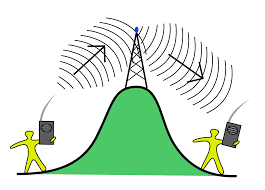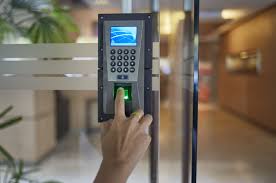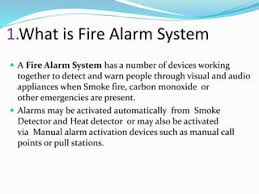Repeaters: Enhancing Signal Strength and Extending Network Coverage
In today’s fast-paced digital world, staying connected is more important than ever. Whether it’s for work, communication, or entertainment, a strong and reliable network signal is crucial. However, many of us have experienced frustrating dead zones or weak signals in certain areas. This is where repeaters come into play.
Repeaters, also known as signal boosters or range extenders, are devices designed to enhance the strength and coverage of wireless signals. They work by amplifying weak signals received from a base station or router and retransmitting them at a higher power level. This process effectively extends the reach of the network and eliminates dead zones.
One of the key advantages of repeaters is their ability to improve both cellular and Wi-Fi signals. In the case of cellular repeaters, they can boost voice calls and data speeds for mobile devices such as smartphones and tablets. This is particularly beneficial in areas with poor reception, such as remote locations or buildings with thick walls that block signals.
Similarly, Wi-Fi repeaters are used to extend the coverage of wireless networks within homes, offices, or public spaces. By placing a repeater strategically between the router and areas with weak signal strength, users can enjoy seamless connectivity throughout their premises.
Setting up a repeater is relatively simple. Most repeaters come with user-friendly interfaces that guide users through the installation process. Typically, it involves connecting the repeater to a power source and configuring it to connect to an existing network.
When choosing a repeater, it’s important to consider factors such as compatibility with your network provider or router model, supported frequency bands (for cellular repeaters), and coverage area. Different models offer varying ranges and capabilities, so it’s essential to select one that suits your specific needs.
The benefits of using repeaters extend beyond improved signal strength and extended coverage. By eliminating dead zones and ensuring a strong and stable connection, repeaters enhance productivity and efficiency. They enable seamless browsing, faster downloads, uninterrupted streaming, and clearer voice calls.
Moreover, repeaters can be cost-effective solutions compared to alternative options like installing additional routers or upgrading to higher-tier network plans. They provide an efficient way to maximize existing network infrastructure without significant investments.
It’s worth noting that while repeaters are effective in enhancing signal strength, they do have limitations. The quality of the signal they amplify depends on the initial signal received from the base station or router. Therefore, it’s important to position the repeater strategically to receive a decent signal for amplification.
In conclusion, repeaters play a vital role in improving network connectivity by boosting weak signals and extending coverage areas. Whether it’s for cellular networks or Wi-Fi systems, these devices provide an affordable and efficient solution for overcoming dead zones and ensuring a strong and reliable connection. With repeaters, staying connected has never been easier.
Common Questions about Repeaters in Computer Networks
- What are repeaters in computer network?
- How are repeaters used today?
- Where is repeater placed?
- What is repeater and router?
What are repeaters in computer network?
In computer networks, repeaters are devices that amplify or regenerate signals to extend the distance over which data can be transmitted. They are used to overcome signal degradation and loss that occurs over long distances in network communication.
Repeaters operate at the physical layer of the network, which deals with the transmission of raw data in the form of bits. When data is transmitted over a network, it can experience attenuation (weakening) and distortion due to factors such as cable length, interference, or other impairments.
A repeater receives a weak or degraded signal and cleans it up by amplifying its strength before retransmitting it. This process helps to restore the integrity of the signal so that it can continue its journey across the network.
Repeaters work with various types of network media, including copper cables (such as Ethernet cables using twisted pair or coaxial cables) and fiber optic cables. They receive signals from one end of a cable segment, amplify them, and then transmit them to the other end. By doing so, they effectively extend the reach of the network by increasing signal strength.
It’s important to note that repeaters do not perform any processing or interpretation of data packets like other networking devices such as switches or routers. Their sole purpose is to regenerate signals and boost their strength for reliable transmission.
In modern computer networks, repeaters are less commonly used compared to other networking devices like switches or routers. This is because newer technologies such as fiber optics allow for longer transmission distances without requiring repeaters. However, in certain situations where long-distance communication is necessary over copper-based media, repeaters may still be employed.
Overall, repeaters play a crucial role in computer networks by ensuring that signals can travel across extended distances without significant loss or degradation. They help maintain reliable communication by amplifying weak signals and extending network coverage.
How are repeaters used today?
In today’s digital landscape, repeaters continue to play a crucial role in enhancing signal strength and extending network coverage. They are widely used in various settings and industries, including:
- Residential Use: In homes and apartments, repeaters are employed to eliminate Wi-Fi dead zones and ensure consistent connectivity throughout the premises. They help overcome obstacles like thick walls or multiple floors that can weaken signals from the main router.
- Commercial Use: Offices, businesses, and retail spaces often utilize repeaters to provide reliable Wi-Fi coverage for employees, customers, and guests. By strategically placing repeaters throughout the space, they can ensure seamless connectivity for all users.
- Public Spaces: Public areas such as airports, shopping malls, stadiums, and parks rely on repeaters to offer widespread Wi-Fi access to visitors. Repeaters help maintain a strong signal in crowded environments where multiple devices are connected simultaneously.
- Cellular Networks: Cellular repeaters are extensively used to improve voice call quality and data speeds in areas with weak cellular reception. They are deployed in both urban and rural locations to enhance coverage inside buildings or extend service range in remote areas.
- Transportation: Repeaters are utilized in transportation systems like trains, buses, and ships to provide reliable onboard Wi-Fi connectivity for passengers during their journeys. This ensures uninterrupted internet access while traveling.
- Industrial Applications: Industries such as manufacturing plants or warehouses use repeaters to extend network coverage across large areas or within structures with challenging environments that interfere with wireless signals.
- Remote Locations: Repeater technology is particularly valuable in remote locations where establishing direct connections with base stations or routers is difficult due to geographical barriers or distance limitations.
- Emergency Services: Police departments, fire stations, hospitals, and other emergency service providers rely on repeaters for seamless communication within their facilities or across wide-ranging operational areas.
Overall, repeaters have become an essential tool for improving network connectivity in various sectors of modern society. By amplifying weak signals and extending coverage, they ensure reliable and consistent wireless communication, contributing to enhanced productivity, efficiency, and convenience in our daily lives.
Where is repeater placed?
Repeaters are typically placed in areas where the signal is weak or experiencing interference. The ideal location for a repeater depends on the type of signal being amplified, whether it is for cellular networks or Wi-Fi systems. Here are some general guidelines:
1. Cellular Repeaters: For amplifying cellular signals, repeaters are usually placed indoors near a window or an area with the best available signal reception. The outdoor antenna of the repeater should be positioned outside, preferably on a rooftop or high point, to capture the strongest incoming signal from the base station.
2. Wi-Fi Repeaters: When extending Wi-Fi coverage, repeaters should be placed strategically between the router and areas with weak signal strength. It’s important to find a location where the repeater can still receive a decent Wi-Fi signal from the main router while effectively extending coverage to desired areas.
In both cases, it may require some trial and error to find the optimal placement for maximum signal enhancement. It’s recommended to experiment with different locations and monitor signal strength using tools like smartphone apps or network diagnostic software until you achieve the desired results.
Additionally, it’s crucial to consider any potential sources of interference that may affect signal quality. Avoid placing repeaters near large metal objects, thick walls, or other electronic devices that could disrupt signals.
Remember that each environment is unique, so it’s important to assess your specific situation and adjust accordingly for optimal performance when placing a repeater.
What is repeater and router?
A repeater and a router are both devices used in networking, but they serve different purposes.
A repeater, also known as a signal booster or range extender, is a device designed to enhance the strength and coverage of wireless signals. It receives a weak signal from a base station or router, amplifies it, and retransmits it at a higher power level. This process extends the reach of the network and eliminates dead zones where the signal is weak or nonexistent. Repeaters are commonly used for both cellular networks and Wi-Fi systems to improve signal strength and extend coverage areas.
On the other hand, a router is a device that connects multiple devices within a network and directs data traffic between them. It acts as a central hub for communication between devices such as computers, smartphones, tablets, and other network-enabled devices. Routers use IP (Internet Protocol) addresses to identify devices within the network and determine how data packets should be routed to their intended destinations. They typically connect to an Internet Service Provider (ISP) to provide access to the internet.
Routers are responsible for tasks such as assigning IP addresses to devices on the network, managing network security through features like firewalls and encryption, and controlling data flow between devices. They allow multiple devices to share a single internet connection while providing local network connectivity.
In summary, while both repeaters and routers play important roles in networking, repeaters focus on enhancing signal strength and extending coverage areas for wireless networks. Routers, on the other hand, facilitate communication between multiple devices within a network by directing data traffic and providing access to the internet.




